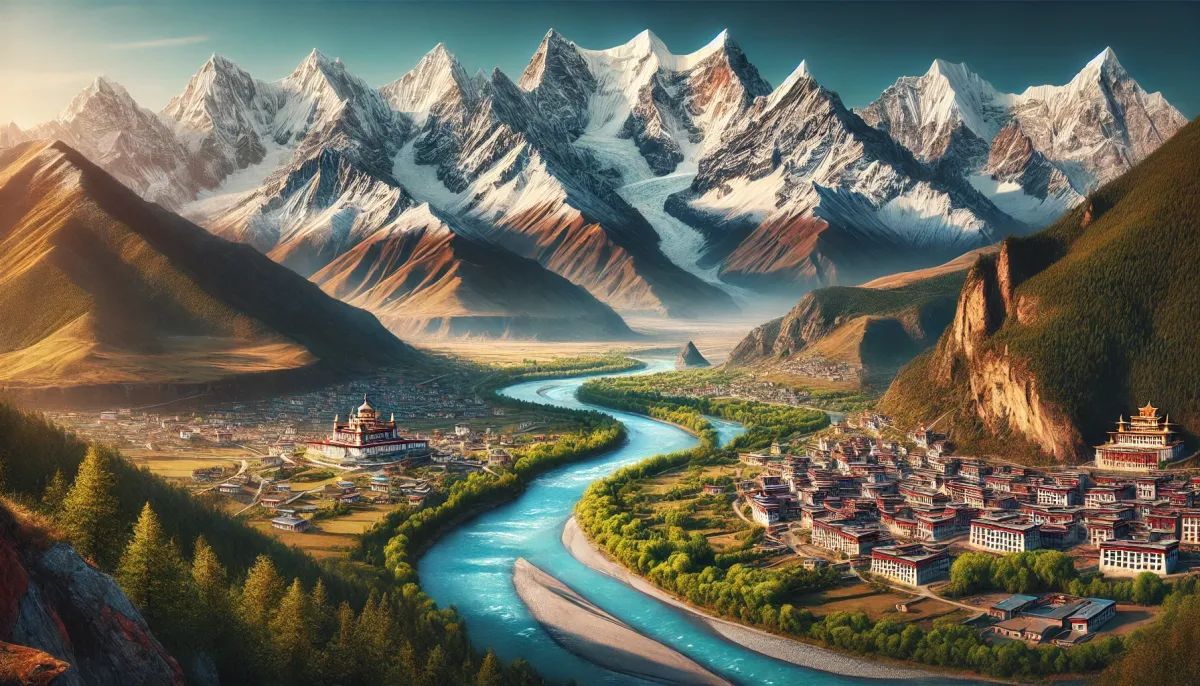Hey everyone, Mark here! I'm back with another adventure, this time a thrilling solo road trip through the majestic landscapes of Tibet. This journey took me through stunning vistas, challenging terrains, and incredible cultural experiences. Get ready for an unforgettable ride!
The Majesty of Mount Meili Snow Mountain
My journey began at the awe-inspiring Meili Snow Mountain. The sheer scale of this mountain range, with its main peak, Kawagebo Peak, towering at 6,740 meters (22,110 feet), left me speechless. It's one of the eight sacred mountains in the Tibetan region and the highest peak in Yunnan Province.
While the summit was shrouded in mist during my visit, I could still appreciate the magnificence of the surrounding eight peaks. The snow-capped mountains, with their perpetual snow cover, are a sight to behold. Remember, at these altitudes, the temperature drops 6 degrees Celsius for every 1,000-meter increase in elevation. That's why even in summer, the snow stays! This mountain even seems to have a "cloud-sucking" effect – it attracts clouds to its summit, making a clear view a rare and lucky occurrence.
The snow-capped peaks rise dramatically above the Lancang River, which flows all the way to Southeast Asia where it's known as the Mekong River. The sheer drop from the mountaintop to the riverbed is over 4 kilometers – absolutely breathtaking! The stunning juxtaposition of the high mountains, deep gorges, the river winding through the valley, and the scattered villages clinging to the mountainside creates a truly remarkable scene.
The viewing platform at Feilai Temple provided the perfect vantage point. This spot, dotted with prayer flags and stupas (characteristic of Tibetan Buddhist faith), offers unparalleled views and even has hotels with rooms that offer incredible views of the "Sun's rays on the Golden Mountain" – a breathtaking sunrise phenomenon.
Navigating the Thrilling Roads of the Yunnan-Tibet Highway
I took the Yunnan-Tibet Highway (滇藏线) on this trip, a route that offers a dramatically different experience from the Sichuan-Tibet Highway (川藏线) I'd taken previously. The road conditions were generally good, but the drive demanded caution. The highway often clings to the edges of cliffs, with limited or no guardrails in certain sections, particularly hazardous during nighttime driving.
| Road Condition Challenges | Mitigation Strategies |
|---|---|
| Cliffside driving with limited guardrails | Drive slowly, especially around curves; avoid nighttime driving if possible |
| Frequent sharp turns | Reduce speed, anticipate turns |
| Potential for rockfalls and landslides (especially during rainy season) | Be vigilant, watch for warning signs |
Cultural Encounters and High-Altitude Challenges
Along the way, I passed through quaint villages like Yanjing, nestled at the foot of towering mountains, with the Lancang River meandering below. The varied altitudes resulted in distinctly different climates and vegetation.
The mountain passes themselves were an adventure. The climb out of Mangkang, for instance, was a thrilling experience. The roads are less steep than some, but the lack of guardrails adds to the inherent risk, especially at the high altitude. The wind can be fierce at elevations near 4,000 meters.
Reaching the top of La'u Shan (4,376 meters) was rewarding. But, the road to Dongda Shan presented a different challenge. Though I easily conquered it by car, I recalled my grueling three-hour bike ride there last year during a heavy rainstorm.
The journey included stops at notable points along the way, such as the stunning Bangda, a small town that surprisingly boasts an airport, and the impressive Lang La Shan Pass (4,572 meters), overlooking the Dema Snow Mountain.
The Perils and Beauty of the 72 Turns and Que'er Shan Tunnel
The 72 Turns (72拐) on the route to Bangda are infamous for their sheer number of sharp hairpin turns, presenting a serious challenge, especially for cyclists. The scenery is undeniably stunning, but the journey demands respect for its potential hazards.
Passing through the Que'er Shan Tunnel was another unforgettable moment. This 7.1-kilometer tunnel is carved through a mountain once considered one of the most dangerous stretches of the Sichuan-Tibet Highway. The old road, with its treacherous hairpin curves, offers a stark contrast to the modern tunnel, a testament to engineering advancements. The sheer beauty and grandeur of the mountains surrounding the tunnel remains breathtaking.
An Unexpected Encounter and a Glimpse into Nomadic Life
During my journey, I had an unexpected encounter with a Tibetan woman who offered me a ride. Our conversation provided a fascinating glimpse into her life, including her family's nomadic traditions and challenges, the importance of their livestock (yaks, horses), and how much they value their animals. Learning about their lives, their economic realities, and their perspectives on modern life was an insightful and unforgettable aspect of my trip.
The Harsh Beauty of the Tibetan Plateau: Kasa Lake and Beyond
My journey concluded near Kasa Lake, a stunning yet starkly beautiful landscape. The high altitude and harsh climate explain the lack of trees and the sparse vegetation. The remoteness and challenges of the region underscored the resilience and adaptability of the people who call it home.







